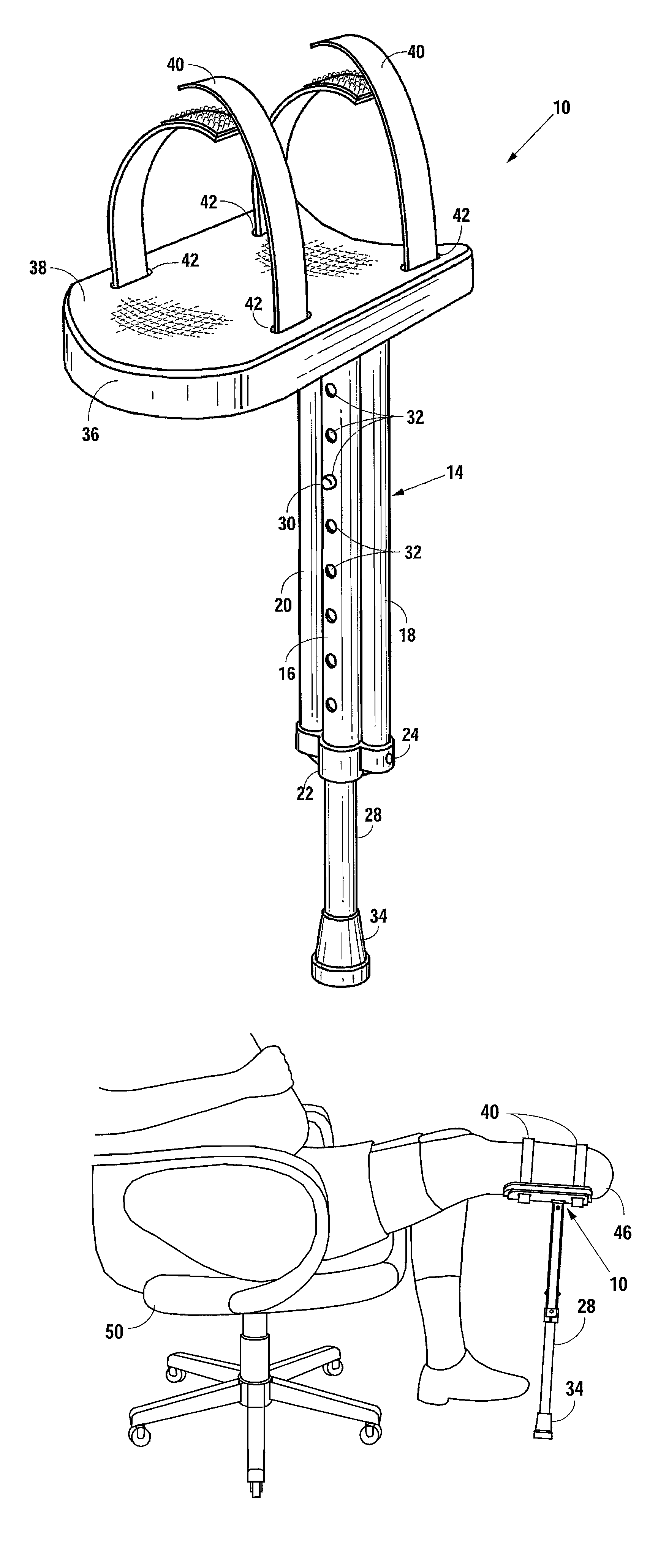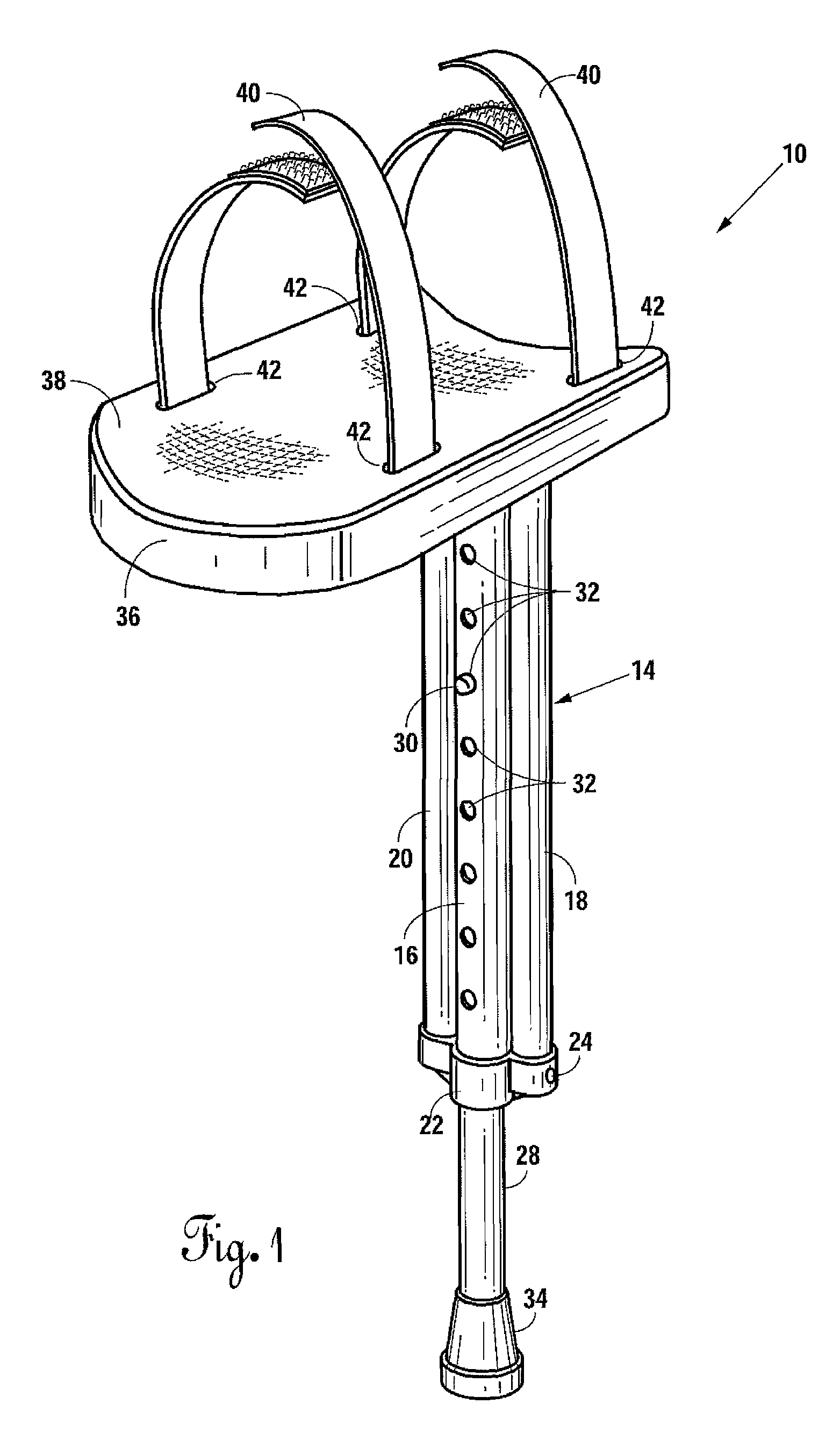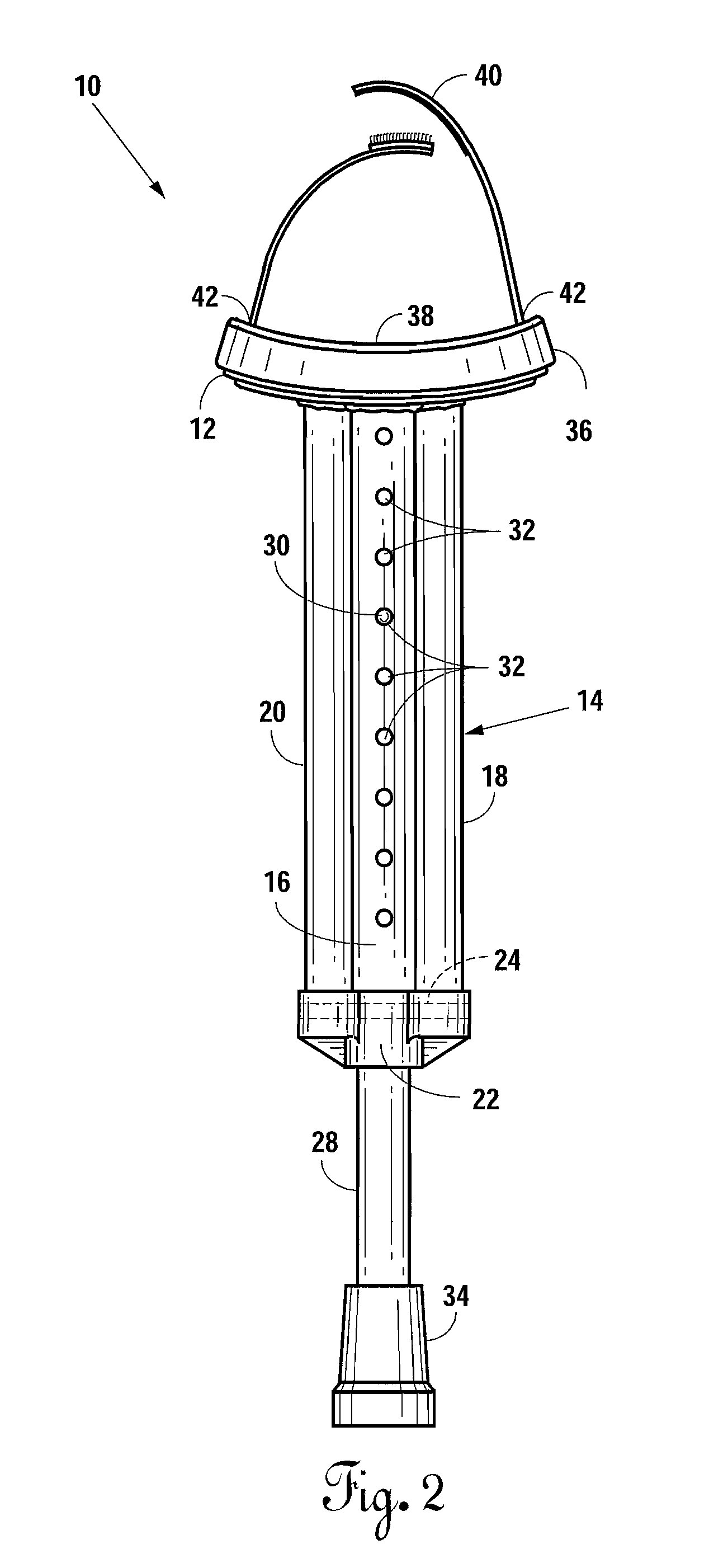Adjustable support for a residual limb of an amputee
a technology for amputee legs and legs, which is applied in the field of adjustable leg support for the residual limb of an amputee, can solve the problems of amputees' atrophy and flexion contracture of the hamstrings, quadriceps and hip muscles, and the amputees' pain in the contracture of the quadriceps, hamstrings and hip muscles, and many amputees do not like to lie in the prone position to combat the flexion contra
- Summary
- Abstract
- Description
- Claims
- Application Information
AI Technical Summary
Benefits of technology
Problems solved by technology
Method used
Image
Examples
Embodiment Construction
[0026]Referring to FIGS. 1, 2, 3 and 3A in combination, a support structure 10 for someone that has had a foot amputated is shown. A support structure 10 has a plate 12 made from suitable material such as aluminum, which plate 12 is slightly curved as shown in FIGS. 3 and 3A. The curvature of plate 12 is of approximately the appropriate curvature to comfortably receive the posterior portion of the residual limb 46 (see FIG. 4) of the person. The plate 12 may be made from a non-corrosive material such as aluminum and has sufficient thickness to support someone putting their leg weight thereon. However, plate 12 may also be made of any other material suitable to support the weight of a person's leg thereon.
[0027]Attached to the plate 12 by welding or any other suitable attaching device or attaching method is a downwardly extending telescopic member 14. To give sufficient rigidity to the downwardly extending telescopic member 14, it has an enlarged central tubular member 16 reinforced ...
PUM
 Login to View More
Login to View More Abstract
Description
Claims
Application Information
 Login to View More
Login to View More - R&D
- Intellectual Property
- Life Sciences
- Materials
- Tech Scout
- Unparalleled Data Quality
- Higher Quality Content
- 60% Fewer Hallucinations
Browse by: Latest US Patents, China's latest patents, Technical Efficacy Thesaurus, Application Domain, Technology Topic, Popular Technical Reports.
© 2025 PatSnap. All rights reserved.Legal|Privacy policy|Modern Slavery Act Transparency Statement|Sitemap|About US| Contact US: help@patsnap.com



